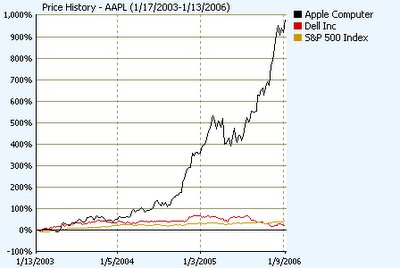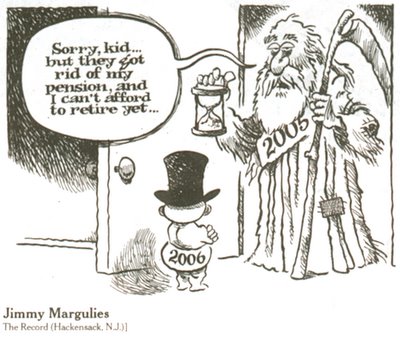The last time I went to this conference was more than 20 years ago, and it was then always known as the Miami Institute. It’s been renamed the Heckerling Institute since then, and it long ago outgrew the facilities at Bar Harbor. This year saw some 2,600 registrants. I think that $850 is a tremendous bargain for a five-day conference, but on the other hand at these volumes they collect $2.2 million in registration fees.
The main lecture hall seated, by my rough estimate, 2,000 people, which, although enormous, was inadequate. So there were two large video overflow halls. They had three tripod-mounted video cameras aimed at the podium that seemed to have servo motors to permit remote adjustment. Someone was flipping among the three images as appropriate, and the video was simulcast on enormous screens, two in the main hall and one in each of the overflow rooms. The video was so good I found myself watching it instead of the speaker, even when I was in the main room.
With so many attendees, a second hotel was pressed into service, about 1/4 mile away, and shuttles ran between the two hotels. With a crowd this large, the breakout sessions require rooms that can seat 500 people, and the Fontainebleau didn’t have enough rooms of that size, so some of the breakouts were held at the other hotel.
Finally, the main sessions were simulcast into the individual rooms in both hotels, so one didn’t have to rush down to see any of the presentations. And in fact, many didn’t, because although the rooms always seemed full, they never seemed crowded, approaching their capacity.
Because of this fact, and the split between the two hotels, one of the exhibitors I spoke with complained that although registration might be up, her traffic was down. That’s another thing that changed dramatically in 20 years, the vendor list is at about 120, with 146 booth spaces (about 25 used double wide booths). The booths cost $2,000 each this year, so that’s another $300,000 into the kitty.
Lots of banks exhibit, including many of our customers. DB was there, distributing the high-end newsletter that we just bid on, as was Harris, Wachovia, Bank of America, Northern Trust, HSBC, Citibank, others that aren’t popping into my head now. I have the vendor list.
The banks consistently said that they were trying to get referrals from estate planners for the full range of their private wealth management services, and so were there to network. However, the B of A guy made the additional observation that “we want to be exposed to the talent that comes here.” They want relationships with a strong, nationwide network of attorneys. If someone in Connecticut is going to relocate to Arizona, B of A wants their Connecticut banker to be able to give the client the name and number of a recommended Arizona attorney with whom to make contact. If they have this network, they should communicate with it on a regular basis, and that validates the custom newsletter pitch that we made to them about a year ago.
The pace over five days was not relaxed, but neither was it hectic. We started each day at 9, after a one-hour breakfast in the exhibit area. Each day included 1 3/4 hours for lunch, with sandwiches for sale in the exhibit area, and nothing was scheduled in the evenings (program ended at 5:15). That’s to allow for massive schmoozing. The vendors sponsored lunches for their favored planners in the hotel, typically with a speaker (Mass Mutual did one on special needs trusts, for example). They also invited selected participants to social outings in the evenings.
The final big change is that Continuing Legal Education requirements help to drive professionals to this program. More than one attorney mentioned to me that this one conference took care of his requirements for the full year. CLE is also required for the insurance guys, and they typically have to sign in for each session to prove their attendance.
In case some people have trouble transitioning away from the “Miami Institute” name, next year the conference will be in Orlando (the next three years, actually) at the Mariott World Center or something like that. Happily, the whole thing then will happen under one roof, because it is a significantly bigger facility. Plus, and this is key I suspect, it has a bigger exhibition hall. They tentatively expect that the proximity to Disney World ($5 cab ride, but no shuttle connection) will boost attendance by 10%, as families make a big vacation out of it. Some of the vendors, however, wonder if the old timers who always go to the program in Miami will really follow it to Orlando. Only time will tell.
Key estate planning issues
I was pleased to learn that Merrill Anderson has stayed well on top of the most critical issues of concern to estate planners. Number one on that list is the decoupling of state and federal taxes, which has been far more complicated than anyone every expected. I suspect that they were all shocked that any states allowed their death taxes to lapse, but 33 have. In addition, we now have “super-decoupling,” which means that not only do some states rely on the pre-2001 federal credit for state death taxes, they have independent exemption amounts. $1 million seems most common, which creates a big dilemma for the $5 million or so estate. To claim the full federal exempt amount requires payment of a state death tax of probably $100,000 or so. A few states have resolved this with the addition of a state-law based QTIP election. It gets really complicated.
What’s more, some states don’t have a gift tax, and rely on the old federal credit for state death taxes. Trouble is, the federal credit doesn’t take lifetime gifts into account (it comes in before the adjusted taxable gifts are added in to determine the tax rate). Bottom line: In the state of Virginia for sure (and probably many others), if one makes a deathbed gift of one’s entire estate, the state death tax is reduced to nothing (but there’s no effect on federal tax liability). Sounds wild, but it has been happening, and it works.
Item two is the shifting federal tax law, and planners’ growing impatience over getting a resolution. There is strong sentiment for killing carryover basis, there is an expectation that rates may be brought way down, to the 15% or 20% range. The one-year repeal is intensely unpopular, but it remains a serious possibility, given the rising tide of partisanship in DC. One school of thought says that 2005 was the year for transfer tax compromise. 2006 is an election year for Congress, and the next Presidential contest will be starting in 2007, making tax reform that much more difficult. On the other hand, the biggest tax reform perhaps in US history happened in 1986, which was a Congressional election year.
The final big item on the agenda (everything else seemed second tier to me, although there was also a ton of talk about FLPs and the Strangi case) was Circular 230. There is tremendous fear and loathing over this. I went to a breakout session on it, and I heard Roy Adams speak on it from the podium.
Roy believes that the sky is falling rapidly. He believes that the club IRS has raised is real, will be very hard to deal with, and that practitioners will have to pay close attention. On the other hand, he acknowledges that some of the routine estate planning advice given out by lawyers may be protected by one of the several exceptions to the new rules. However, on Roy’s reading of the requirements I would guess that FLPs are pretty much history, because they will require a “covered opinion letter” which Roy thinks will be so expensive to create that only the super rich can afford them.
Lou Mezzulo, on the other hand, is not so very worried (though he is concerned). He doesn’t believe that any of his written communications fall within the new requirements, because in all cases the primary purpose of his advice is not how to avoid taxes but how to pass property to the next generation (albeit on a tax-efficient basis). Even FLP communications are safe, in his analysis, because the big issue—their estate inclusion based upon IRC 2036—is determined not by his advice or the documents he drafts, but by the client’s subsequent conduct. Mezzulo said that he has not once included the 230 disclaimer on any of his client correspondence. Roy didn’t say, but I’m pretty confident that he uses a disclaimer with some regularity. However, clients tend to be upset when they read that they can’t rely upon advice for which they have paid good money.
It’s clear that Circular 230 doesn’t apply to our newsletters, which are in the nature of a treatise and not advice to specific clients. It’s equally clear that newsletter publishers are ignoring this reality and putting 230 disclaimers on their products anyway.
ConclusionOne thing is clear: Estate planning is not going away. Banks continue to recognize it as a hot button and entry path to the high net worth market. Planners are preparing for a life without the estate tax to goad people into action, and they are concerned about that. Lawyers pay more for their direct mail than bankers or brokers pay. And evidently, the public continues to have a thirst for estate planning information.
The conference was a great experience, and I should not wait 20 years before going again.











